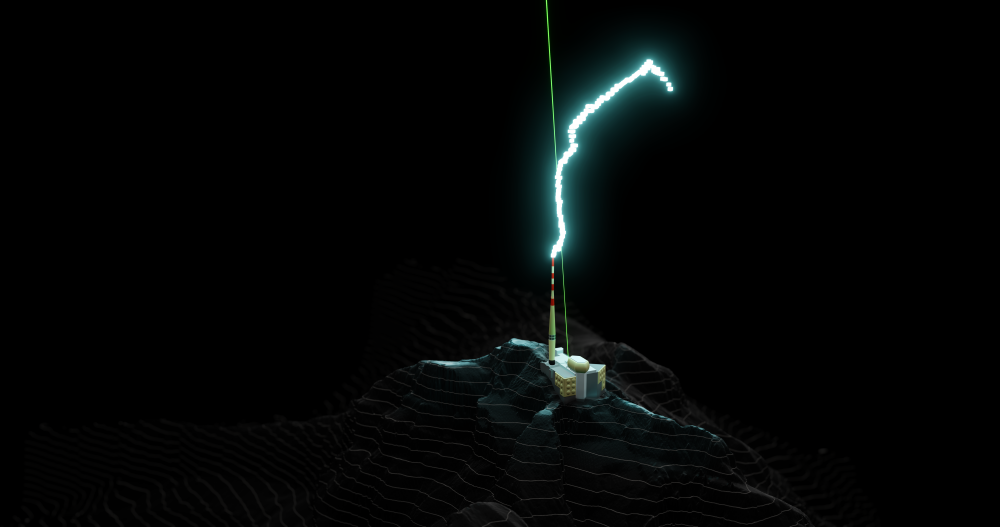Deflecting lightning with a laser lightning rod
 © Scientify
© Scientify
Thanks to a high-powered laser installed on the summit of Säntis (Switzerland), a European consortium led by the Laboratoire d’optique appliquée has succeeded in influencing the trajectory of lightning. These results are published in the journal Nature Photonics.
Lightning-protection devices have changed little since 1752 when Benjamin Franklin invented the lightning rod – a pointed, conductive mast made of metal connected to the ground. The traditional rod is to this day still the most effective form of external protection: it protects a surface with a radius that is more or less equal to its height. However, it is not an optimal system for protecting sensitive sites over a wide area, such as an airport, wind farm or nuclear power plant.
To overcome this challenge, a European consortium has been initiated, coordinated by Aurélien Houard, a researcher at the Laboratoire d'optique appliquée (LOA*), in partnership with the University of Geneva (UNIGE), The École polytechnique fédérale de Lausanne (EPFL), TRUMPF scientific lasers, ArianeGroup, AMC and the School of Engineering and Management (HEIG-VD). It has been working on a device known as the Laser Lightning Rod (LLR). By generating channels of ionised air, the LLR was used to guide lightning along its beam.
“When very high-power laser pulses are emitted into the atmosphere, filaments of very intense light form inside the beam. These filaments ionise the nitrogen and oxygen molecules in the air, which then release electrons that are free to move. This ionised air, called plasma, becomes an electrical conductor” explains Jean-Pierre Wolf, professor in the Department of Applied Physics in the Physics Section of UNIGE’s Faculty of Science.
Tests at an altitude of 2,500 m
A new laser had to be developed with an average power of one kilowatt, one Joule per pulse and a duration per pulse of one picosecond. The rod is 1.5 m wide, 8 m long and weighs more than 3 tons, and was designed by TRUMPF scientific lasers. This terawatt laser was tested on the summit of Säntis (at a height of 2,502 m) already instrumented to observe lightning. It was focused above a 124 m transmitter, which was equipped with a traditional lightning rod. This is one of the structures most affected by lightning in Europe. «The main difficulty was that it was a life-size campaign. We had to prepare an environment in which we could install and protect the laser » says Pierre Walch, who participated in the campaign and has just defended his thesis on this topic at LOA.
The laser was activated every time storm activity was forecast between June and September 2021. The area had to be closed to air traffic in advance. “The aim was to see whether there was a difference with or without the laser”, explains Aurélien Houard. “We compared the data collected when the laser filament was produced above the tower and when the tower was struck naturally by lightning”.
Effective even through cloud
It took almost a year to analyse the colossal amount of data collected. This analysis now shows that the laser can guide lightning effectively. Professor Wolf further explains: “From the first lightning event using the laser, we found that the discharge could follow the beam for nearly 60 meters before reaching the tower, meaning that it increased the radius of the protection surface from 120 m to 180 m”.
Unlike other lasers, the one developed for this project works even in difficult weather conditions, such as fog (often found at the summit of Säntis). This outcome had previously only been observed in the laboratory. The next step for the consortium will be to increase the height of the laser’s action even further. The long-term objective includes using the LLR to extend a 10 m lightning rod by 500 m.
*LOA: a joint research unit CNRS, École Polytechnique - Institut Polytechnique de Paris, ENSTA Paris - Institut Polytechnique de Paris
 Support l'X
Support l'X